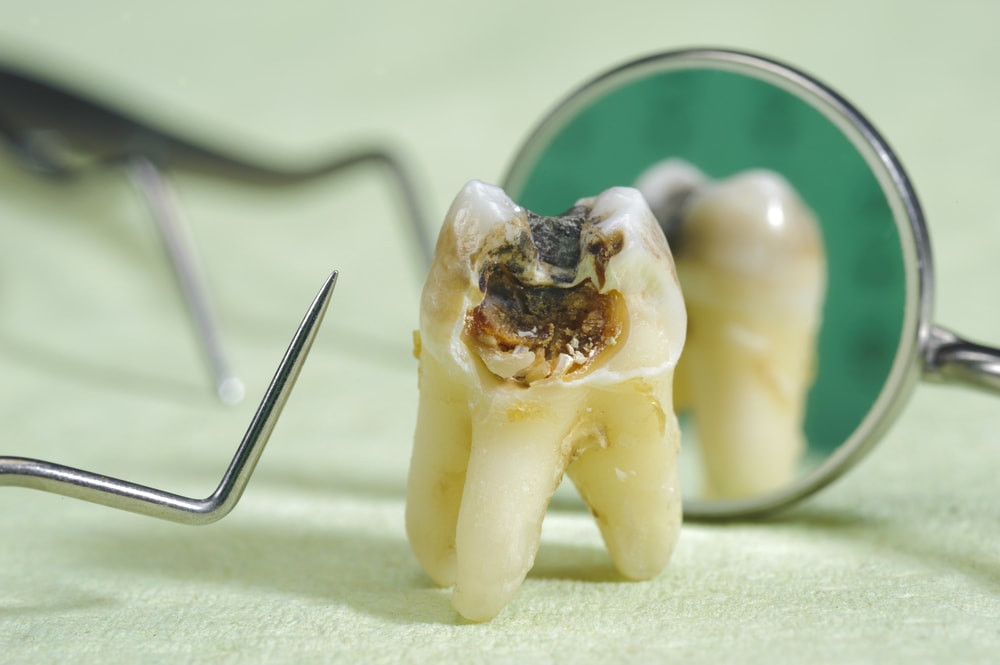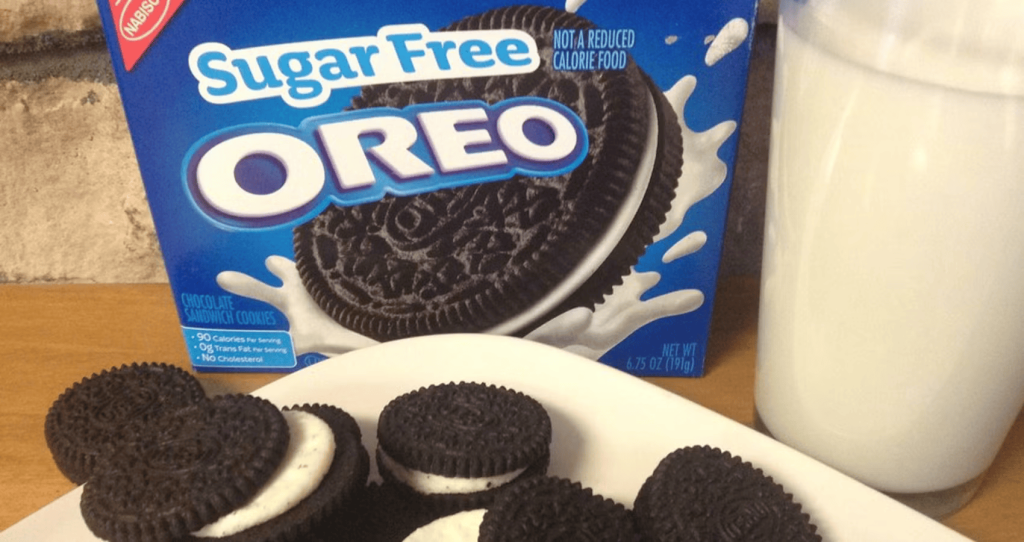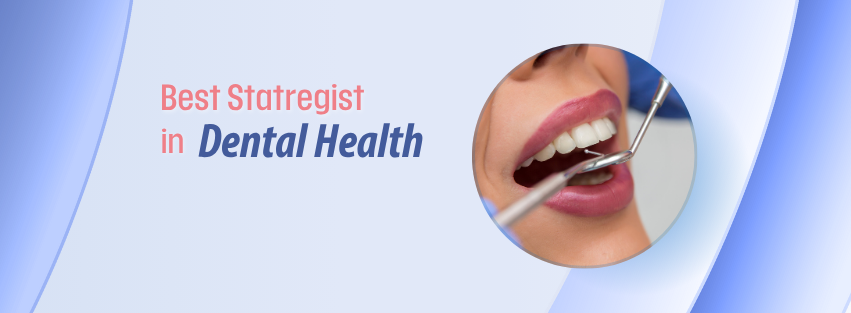
Understanding why Oreos get stuck in your teeth:
Many of us love indulging in Oreos, the iconic chocolate sandwich cookies. However, there’s a common complaint that you may have experienced: why do Oreos get stuck in your teeth? This seemingly simple question taps into the texture, ingredients, and the act of eating these delightful treats.
The primary reason Oreos often get lodged between your teeth is their unique composition. Here’s a closer look at the factors contributing to this sticky situation.
Ingredients that contributes to stickiness:

Oreos contain a mix of sugar, flour, and cream filling, which can create a sticky paste when chewed. Let’s break this down:
- Sugar: High sugar content can make the cream filling gooey, causing it to cling to your teeth.
- Hydration: The cream center has moisture that allows it to stick, especially when mixed with saliva while eating.
- Flour: The flour in the cookie itself can turn into a paste when it contacts moisture, adding to the overall stickiness.
The role of texture:
The texture of Oreos also plays a significant role in how they behave in your mouth. The cookies are crispy yet soft enough to break into pieces when bitten. Here are the aspects of texture to consider:
- Crispiness: When you bite into an Oreo, the outer cookie crumbles. These crumbs can easily become trapped between teeth.
- Soft Filling: The creamy filling contrasts with the cookie’s crunch, making it more likely to stick when mixed with your saliva.
- Chewing Motion: The way you chew Oreos can contribute to how much of the filling ends up between your teeth. If you chew fast, the softer filling can stick more readily.
Eating habits and techniques:
How you eat your Oreos matters too! Some people enjoy twisting the cookie apart, which can help reduce direct contact of the filling with the teeth. However, this method isn’t for everyone. If you prefer eating them whole, consider these tips:
- Savor the Flavor: Take smaller bites; this can help break down the cookie quicker and reduce the chances of remaining crumbs.
- Drink Water: Follow each cookie bite with a sip of water. This not only helps wash down the cookie but also prevents residue from settling.
- Mouth Movement: Move your tongue around your teeth after enjoying an Oreo. This can dislodge any crumbs or cream that are stuck.
Regularly consuming Oreos without proper dental care might lead to consequences beyond just feeling like they’re stuck. Sugar can promote tooth decay, so it’s essential to maintain a healthy oral hygiene routine. Here’s what to do:
- Brush Regularly: Brush your teeth at least twice a day to remove any hidden cookie remnants.
- Use Floss: Floss daily to get between those teeth where Oreos love to hide.
- Visit the Dentist: Regular check-ups can help identify any problems caused by indulgence in sugary treats.
The science behind sticky snacks and oral health:
Have you ever reached for a delicious snack only to find it stubbornly stuck in your teeth afterward? If you’ve had this experience with snacks like Oreos or other sticky treats, you’re not alone. This common occurrence can be attributed to several factors that interlink munching on your favorite sweets and your oral health.
When enjoying a cookie or chewy candy, the structure and ingredients play a significant role in how they interact with your teeth. For instance, many snacks are designed to be sweet, which often means they contain sugar that can cling to teeth. But why exactly does this happen? Let’s unravel the science behind it.
The sticky nature of snacks:
Many treats, especially ones like Oreos, include a combination of sugar, fats, and starches. These components can create a binding effect when you bite into them. Here’s how:
- Sugars: Sugar is sticky by nature. When you chew, sugars can attach to the surfaces of your teeth, creating a sticky residue.
- Fats: Fats, such as those found in cream fillings, contribute to the overall texture. They can enhance the stickiness of a snack, making it more troublesome to clean from your teeth.
- Starches: Starchy ingredients can break down into sugars in your mouth, leading to further stickiness. Starch breaks down into glucose in the presence of saliva, increasing the likelihood it will cling to your dental surfaces.
The role of dental anatomy:
Your teeth are not just smooth surfaces. They have grooves, pits, and minor imperfections that can catch and trap food particles. This becomes even more complex with sticky snacks. The more textured and stickier a snack is, the more likely it is to get lodged in those little spaces.
Molars, for example, have cusps and pits that make them great at grinding but also prone to trapping food. If you’re munching on Oreos, those tiny bits can easily find their way into the uneven surfaces of your molars, making removal difficult.
Implications for oral health:
Having snacks stuck in your teeth can lead to more than just an inconvenient moment. Here are some ways it can affect your oral health:
- Cavities: When sugar stays on your teeth, it feeds harmful bacteria that produce acids. Over time, this can erode the enamel and lead to cavities.
- Gum Disease: If leftover food particles aren’t cleaned away, they can cause inflammation in your gums, leading to gingivitis and, eventually, more serious gum disease.
- Bad Breath: Food particles that linger in your mouth can create an unpleasant odor, often leading to bad breath.
Minimizing the stickiness effects:
So, how can you enjoy your favorite sticky snacks while keeping your teeth happy? Here are some practical strategies:
- Rinse with Water: A simple rinse after snacking can help wash away some of the residue left behind on your teeth.
- Use Dental Floss: Flossing is an effective way to remove pesky snack remnants stuck between your teeth.
- Chew Sugar-Free Gum: Chewing gum, especially if sugar-free, stimulates saliva flow which helps clean your teeth naturally.
- Brush Regularly: Make sure you brush your teeth at least twice a day, focusing on those little grooves where snacks can get lodged.
Tips for enjoying oreos without the dental dilemma.
Understanding the problem:
First, let’s explore why Oreos tend to get lodged in your teeth. The creamy filling and crunchy cookie texture create the perfect storm for dental clinginess. The cream is sugary and sticky, allowing it to adhere to the enamel of your teeth, especially in the nooks and crannies.
This is particularly true for those who have dental work like braces or fillings. Additionally, if you have any dental issues, such as cavities, Oreos can become even more troublesome.
Tips for enjoying Oreos:
Here are some effective tips to help you savor every bite of Oreos without the sticky aftermath:
- Stay Hydrated: Drinking water while enjoying your Oreos can help wash away any crumbs or sticky bits. Consider having a glass of water on hand to sip between cookies.
- Pair with Milk: Dipping Oreos in milk is not just a classic method; it also helps clean your mouth. The milk can help dislodge any stuck bits and combat the sweetness of the cookie, giving you a balanced snack.
- Brush Up Before Indulging: If you know you’ll be snacking on Oreos, brush your teeth beforehand. This way, you have less surface area for the cookies to stick to, minimizing the issue.
- Take Your Time: Instead of devouring a whole pack in one sitting, try savoring one or two Oreos at a time. Chewing them slowly can help you manage crumbs better and enjoy the flavor.
- Consider the Timing: Timing your Oreo consumption is crucial. Try enjoying them during or after meals when your saliva production is higher, as this will help cleanse your mouth naturally.
- Mind Your Dental Hygiene: Regular visits to the dentist will ensure your teeth and gums are healthy. This way, you can enjoy snacks like Oreos without the worry of dental issues complicating the enjoyment.
Creative ways to enjoy Oreos:
If you want to have fun with Oreos while avoiding dental woes, consider some creative ideas:
- Oreo Milkshake: Blend Oreos with milk and a scoop of ice cream for a delicious treat. This way, you’re consuming them in a liquid form, which minimizes the chances of them getting stuck.
- Oreo Crusts: Crush Oreos and use them to make crusts for pies or cheesecakes. You can enjoy the flavor without the worry of chunks getting stuck in your teeth.
- Oreo Truffles: Make no-bake Oreo truffles by mixing crushed Oreos with cream cheese, coating them in chocolate. They are small, bite-sized, and much less likely to get stuck.
If you encounter stickiness:
In case you find yourself with an Oreo-induced dental dilemma, here are a few tips to remove those pesky bits:
- Use Your Tongue: Try to maneuver the stuck pieces away from tight spots using your tongue.
- Floss: A gentle flossing can help dislodge any stuck pieces effectively. Always carry a small pack of dental floss to ensure your teeth stay clean.
- Rinse: Swishing around water in your mouth can help loosen the stuck fillings or cookie remnants.
Enjoying Oreos doesn’t have to mean dealing with sticky teeth. With a few mindful strategies, you can delight in the rich flavors of these cookies while taking good care of your dental health. Always remember, snack smart and enjoy every creamy bite!
Comparing oreos to other cookies in terms of stickiness:
When you indulge in Oreos, one of the first things you might notice is how easily they seem to stick to your teeth. This is a common experience shared by many cookie lovers. But why does this happen, and how do Oreos compare to other cookies when it comes to stickiness? Let’s dive into the details.
Oreos have a unique combination of cream filling and a chocolate wafer that contributes significantly to their stickiness. The creamy middle is not only delicious but also tends to cling to surfaces—like your teeth. This is primarily due to the sugar content and the nature of the creamy texture. In contrast, the structure of cookies can vary widely depending on their ingredients, baking methods, and overall composition.
To fully understand why Oreos might get stuck in your teeth more than other cookies, we need to consider several factors:
- Moisture Content: Oreos have a moisture balance that makes them chewy yet crumbly. This is less common in dryer cookies, such as biscotti, which tend to break instead of stick.
- Sugar Types: The types of sugar used in Oreos, mostly granulated and powdered, can create a sticky sensation. Other cookies, like chocolate chip, often use brown sugar, which may not produce the same cling.
- Filling Composition: Oreos feature a cream filling that can be thicker than fillings found in other cookie varieties. This creaminess is what makes it stickier.
- Shape and Size: The classic sandwich structure of Oreos provides larger surfaces for the filling to attach to your teeth compared to single-layer cookies.
- Crumb Structure: When Oreos crumble, it creates tiny pieces that can easily catch between teeth, leading to that annoying sticky feeling.
Another factor is how the cookies are eaten. Oreos are often enjoyed in a unique ritual—dunking them in milk or twisting them apart. This interaction not only enhances the taste but can also exacerbate stickiness by mixing the sweet cream with moisture which may then adhere to your teeth more readily.
On the other hand, cookies that are eaten by themselves tend to avoid that extra factor that can lead to stickiness.
Even with all of this in mind, it’s worth noting that stickiness isn’t necessarily a negative quality for cookie lovers. Many people find the unique texture of Oreos to be part of their appeal.
How to maintain dental hygiene after snack time?
After a satisfying snack, especially one that includes sweet treats like cookies or candies, it’s easy to forget about the importance of dental hygiene. However, maintaining cleanliness in your mouth post-snack is crucial for overall oral health. Here are some effective strategies to ensure your teeth and gums remain in great shape, even after that delicious snack time.
Brush your teeth:

One of the best ways to maintain dental hygiene after snacking is by brushing your teeth. Make sure to follow these tips:
- Use fluoride toothpaste to help strengthen your enamel.
- Brush for at least two minutes, covering every surface of each tooth.
- Don’t forget to gently brush your tongue to remove bacteria and freshen your breath.
Floss regularly:
Brushing can clean most surfaces of your teeth, but it often misses those tight spaces between them. Flossing helps remove food particles and plaque that can lead to cavities. Here’s how to do it effectively:
- Use about 18 inches of dental floss, winding it around your fingers.
- Gently slide the floss between your teeth and curve it around each tooth in a C-shape.
- Be careful not to snap it against your gums, as that can cause irritation.
Use mouthwash:
Rinsing with mouthwash can be an excellent addition to your dental hygiene routine. Mouthwash can help reduce plaque, fight bad breath, and even strengthen your teeth. Here are some benefits:
- Choose an antibacterial or fluoride mouthwash for the best results.
- Swish it in your mouth for the amount of time recommended on the bottle.
- Try to avoid eating or drinking for at least 30 minutes afterward to let the rinse work effectively.
Stay hydrated:
Drinking water not only quenches your thirst but also helps wash away food particles and sugars left on your teeth. Remember these points about hydration:
- Opt for water over sugary drinks whenever possible.
- Keep a water bottle handy for easy access throughout the day.
- Rinse your mouth with water immediately after snacking to help cleanse your teeth.
Snack smart:
The types of snacks you choose can impact your dental hygiene efforts. Aim for healthier options that are less likely to stick to your teeth. Consider these suggestions:
- Fruits like apples and pears, which can help clean your teeth as you chew.
- Vegetables like carrots or celery which are crunchy and can naturally scrub away bacteria.
- Cheese, which can neutralize acids and provide calcium for your teeth.
Chew sugar-free gum:
If you cannot brush your teeth right after a snack, chewing sugar-free gum can be a good solution. Here’s how it helps:
- It stimulates saliva production, which helps wash away food particles.
- Saliva neutralizes acids in your mouth that can cause tooth decay.
- Look for gum with xylitol, a sugar substitute that can also help reduce cavity-causing bacteria.
Conclusions:
Enjoying Oreos can be a delightful experience, but it’s clear that the sticky nature of these popular cookies often leads to the dreaded dental dilemma. Understanding why Oreos get stuck in your teeth is not just about the ingredients; it’s also about how these sweet treats interact with your teeth and gums.
The sugar content and the creamy filling can create a challenging situation for your oral health, particularly when compared to other cookies that may not be as adhesive.
Furthermore, practicing good dental hygiene after snack time is crucial for maintaining overall oral health. Brushing your teeth, flossing, and even rinsing with water can help eliminate any lingering cookie debris and protect your enamel.
